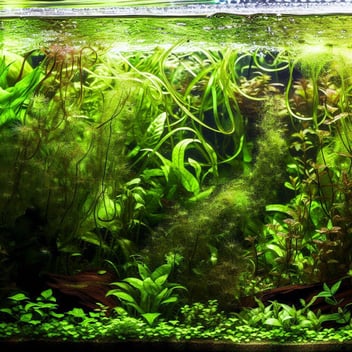
Building a balanced aquatic ecosystem in your aquarium or pond is a rewarding endeavor that combines the beauty of nature with ecological harmony. Whether you're a seasoned aquarist or a beginner, understanding the basics of maintaining a healthy, sustainable environment for your aquatic life is essential. Here’s how you can achieve a balanced aquatic ecosystem.
1. Choosing the Right Plants and Fish
Plants:
- Anubias Barteri 'Nana Petite': A hardy, low-maintenance plant perfect for beginners.
- Java Fern: Ideal for low-light conditions and requires minimal care.
- Amazon Sword: Adds lush greenery and provides hiding spots for fish.
Fish:
- Tetras: Small, colorful, and peaceful fish that thrive in community tanks.
- Guppies: Easy to care for and great for adding vibrant colors.
- Catfish: Help in cleaning the tank by eating algae and leftover food.
2. Maintaining Water Quality
Filtration:
- Use a high-quality filter to keep the water clean and free from toxins.
- Biological filters are great for breaking down waste products naturally.
Water Changes:
- Regular water changes (about 10-20% weekly) help maintain water quality.
- Use a water conditioner to remove chlorine and other harmful substances.
Testing Water Parameters:
- Regularly test pH, ammonia, nitrite, and nitrate levels.
- Maintain stable water parameters to prevent stress and diseases in fish.
3. Providing Proper Lighting
- Ensure adequate lighting for plant photosynthesis and fish health.
- Use LED lights to mimic natural sunlight and promote plant growth.
- Avoid excessive lighting to prevent algae overgrowth.
4. Feeding Practices
- Feed fish a balanced diet with high-quality food.
- Avoid overfeeding to prevent water pollution and health issues.
- Incorporate variety by using flakes, pellets, and frozen foods.
5. Creating Natural Habitats
- Use natural substrates like gravel or sand to mimic the natural environment.
- Add rocks, driftwood, and caves to provide hiding spots and reduce stress.
- Ensure plants are well-rooted and have enough space to grow.
6. Managing Algae Growth
- Introduce algae-eating fish like plecos or snails.
- Maintain a balance between lighting and nutrients to prevent algae blooms.
- Manually remove excess algae during water changes.
7. Monitoring and Maintenance
- Regularly observe fish behavior and plant health.
- Clean the tank and equipment periodically to prevent buildup of waste.
- Trim plants to encourage healthy growth and prevent overcrowding.
Conclusion
Creating a balanced aquatic ecosystem requires attention to detail and a commitment to regular maintenance. By choosing the right plants and fish, maintaining water quality, providing proper lighting, and following sustainable practices, you can enjoy a beautiful and ecologically balanced aquarium or pond. Remember, a healthy aquatic environment not only looks stunning but also promotes the well-being of your aquatic life.
Ready to start your journey to a balanced aquatic ecosystem? Check out our wide range of plants and accessories at Canton Aquatics to get started!

.jpg)
.jpg?width=352&name=Hygrophila+difformis%20Water%20Wisteria%20(1).jpg)

Leave a Comment